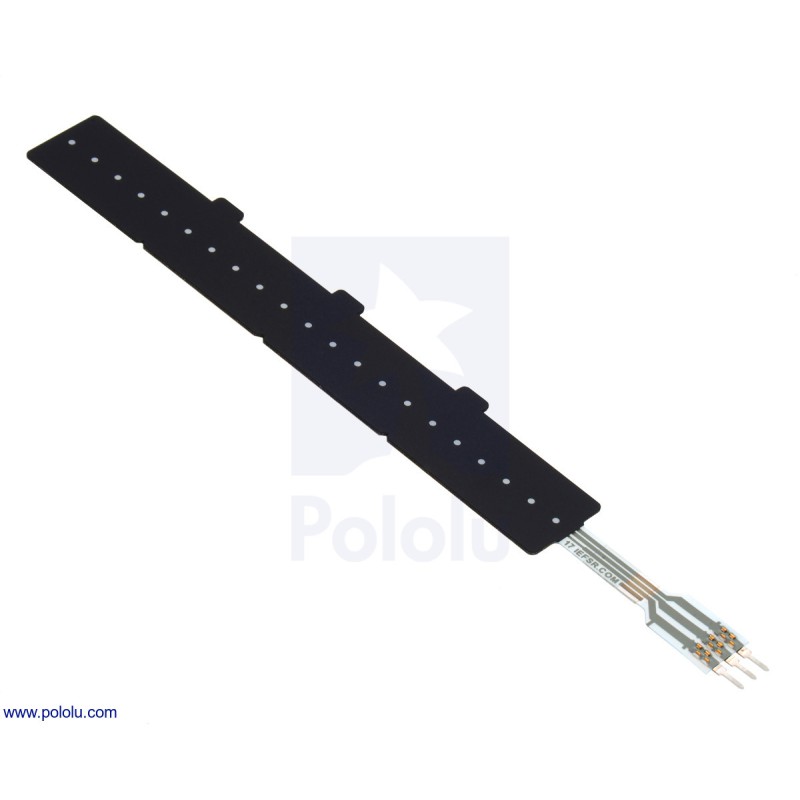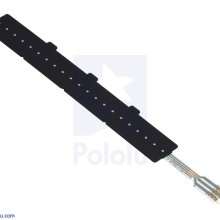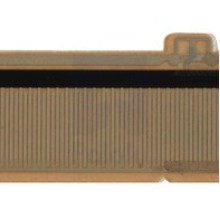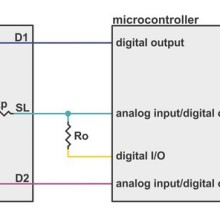Force-Sensing Linear Potentiometer: 4.0″×0.4″ Strip, Customizable Length
Force-sensing linear potentiometers (FSLPs) from Interlink Electronics are passive components with resistances that depend on the magnitude and location of the force applied to the strip, making it easy to add novel touch interfaces or tactile sensors to your project. This 4″ (10cm) strip can be cut to shorter, predefined lengths (1″, 2″, or 3″) to better suit your application. An external resistor (typically 4.7kΩ to 10kΩ) is required but not included.
Overview
This force-sensing linear potentiometer (FSLP) from Interlink Electronics is a passive component with internal resistances that independently change in response to the location and magnitude of an applied force. This allows a microcontroller with an analog-to-digital converter (ADC), such as an Arduino or A-Star, to easily determine where and how hard the strip is being pressed, enabling advanced touch-control user interfaces (like menu navigation) or sophisticated tactile sensors. The FSLP is effectively a force-sensing resistor (FSR) that can also simultaneously sense position. The video above shows a sample project with this FSLP being used to control an LED strip: position determines the number of lit LEDs and pressure determines the LED color. The Arduino code used in the example is available on github, and it has functions for reading pressure and position that could be helpful in getting started using this sensor. More information about the demo is available in our FSLP blog post.
The 4.1″×0.57″ strip is light (1.4g) and extremely thin (0.02″), and it has an active sensing area of 3.9″×0.37″ that can be customized to several different lengths by cutting the strip at predefined points. It does not appreciably compress when pressure is applied, and while it is flexible, it is intended to be used on smooth, flat surfaces since bending can negatively impact performance. The FSLP has a masked adhesive backing for easy mounting, and the 1.2″ flat, flexible male leads give you a convenient way to integrate the part into your project. The two male pins (called “solder tabs”) have a 0.1″ spacing, which means they are compatible with most solderless breadboards and perfboards, though the solder tabs are too short to work well with many 0.1″ connectors.

Dimensions
| Size: | 4.1″ × 0.57″ × 0.02″1 |
|---|---|
| Weight: | 1.4 g |




